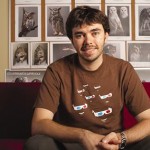Legend of the Guardians: Previs/lensing director David Scott
 Previs and lensing director David Scott explains how director Zack Snyder wanted all camera work in Legend of the Guardians: The Owls of Ga’Hoole to look like it had been shot by a real owl-sized camera crew.
Previs and lensing director David Scott explains how director Zack Snyder wanted all camera work in Legend of the Guardians: The Owls of Ga’Hoole to look like it had been shot by a real owl-sized camera crew.
I was told that director Zack Snyder is not a big fan of having the backgrounds in his films in focus. Was this a challenge, working in 3D?
Shooting shallow focus in 3D was difficult, but it was essential to have in the film because it’s about owls and most of the film is set at night. Zack wanted to make sure all of the camera work in the film looked as though it was operated and photographed by a real owl-sized camera crew, and if you were to shoot owls at night the aperture needs to be wide open.
Backgrounds out-of-focus weren’t so much a problem as foregrounds. Rack focuses were also difficult; just before the Tassie Devil attack, there’s a two-shot where we rack focus from Kludd to Soren. When it was locked off, the rack focus was hard to watch in 3D, because it took a beat to register what was going on and you had to make a conscious decision to look towards Soren. The way we got around it was by doing a small but quick pan adjustment that helped lead the eye through the rack focus from the left of screen to the right, so your eye naturally goes from Kludd to Soren.

